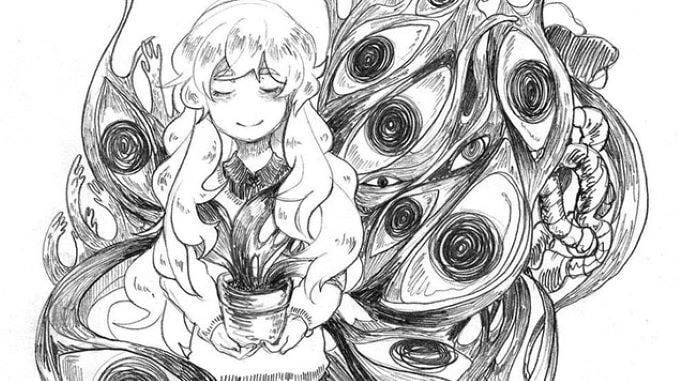
Halloween is right around the corner, and most people are wondering how they’re going to spend the creepiest night of the year. A surefire way to get my thrills while keeping my bank account intact has always been to explore the RPG Maker scene, which has been a great boon to the realm of horror for over two decades now. Many of these freeware developers are unsung heroes of the genre, and have greatly paved the way for more recognizable games like Undertale and Omori.
Beyond just being free, these games hold up as bone-chilling experiences and often serve as keen meditations on artmaking as a whole. Made outside of the industry, often by a handful or even just one person, the inventiveness and innovation on display while using more restrictive tools with much smaller to nonexistent budgets continues to impress and define more personal, shared storytelling. (Much thanks to the dedicated fan translators whose efforts go unsung!) There’s a lot of untold history here and far more worth playing than our handpicked list.
Ib
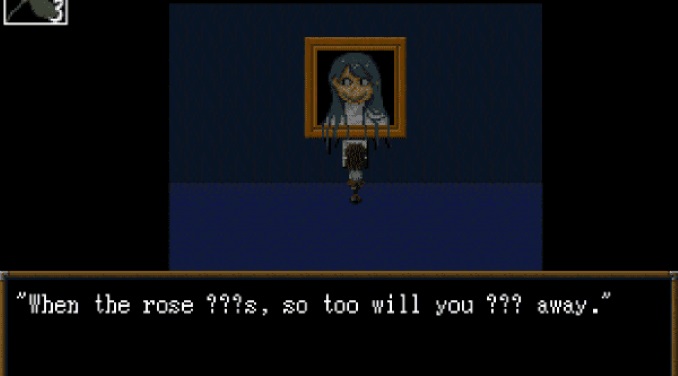
Ib has become a classic and a mainstay of the 2010s RPG Maker boom and it’s easy to see why—it’s a psychological horror game with a clear vision and lovely, Edward Gorey-esque art direction. Released in 2012 by developer Kouri, Ib follows its titular young heroine as she attends an exhibit at an art gallery and gets lost after observing a strange painting. Much of the game involves Ib wandering the gallery in search of an exit and solving puzzles while avoiding attacks from strange assailants.
The game is unique in its immersiveness as the player, stuck as a nine year old, is unable to parse some of what is going on around them. Plaques will have words omitted because Ib doesn’t know what they mean, so some of the story elements that would be otherwise obvious are obscured which lends the game a dizzying sense of juvenile fear.
Recently, Kouri announced on his blog that Ib will be receiving a remake for its 10 year anniversary. The remake will feature redrawn graphics and an altered score. The original is still a wonderful game, though, and endures as one of the best in the genre.
Hello Charlotte
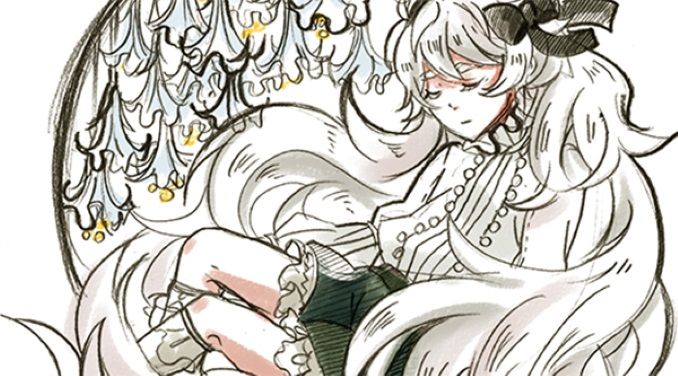
Estonian developer Etherane is one of the most preeminent current figures in the RPGMaker scene. Her three-part game series Hello Charlotte is one of the most complex offerings to date and touches on frequent themes in Etherane’s work such as the intersection of religion and trauma and a preemptive loss of childhood. Perhaps most notably, though, is Etherane’s gorgeous artwork, which is often surreal and foreboding yet sweet and nostalgic.
Hello Charlotte’s first episode is available for free, with the subsequent two episodes being available for $2.99 each. Her other games also come highly suggested—tomorrow won’t come for those without…… follows up on many of the elements present in Hello Charlotte while retaining a fierce identity of its own complete with its own cosmology and suggestive storytelling, and her still unreleased sci-fi twine epic Mr. Rainer’s Solve-It Service looks to be a possible opus in her wonderful array of metanarrative adventures.
Your Turn To Die—Death Game By Majority
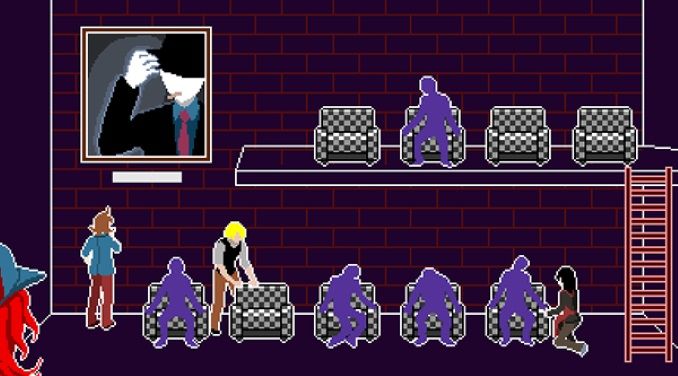
It’s no mystery that death games have slowly become one of the most enduring microgenres—from Danganronpa and Zero Escape to the more recent TV hit Squid Game, people can’t seem to get enough out of seeing people die in extreme ways amid high stakes games of luck and trickery. Your Turn To Die—Death Game By Majority is developer Nankidai’s answer to the illustrious genre by way of RPG Maker, and is certainly one of the most ambitious projects made with the program.
Released in parts since 2017, Your Turn To Die is an episodic blend of visual novel, point-and-click, and negotiation elements similar to the Danganronpa franchise. Unlike Danganronpa, however, the results of each trial are not set in stone—different characters may be up for elimination from the game, which greatly alters the course of an individual playthrough.
Like many other death games, the true mystery is why everyone’s there in the first place; the twists and turns the plot takes are exciting and unexpected, but what’s truly unique about Your Turn To Die is the empathy is provides for its entire cast, alive or dead, and the dedication each character slowly forges in protecting one another and getting out alive. Despite the dire content, it’s a genuinely optimistic game and a fine example of tragic horror.
Flesh, Blood, and Concrete
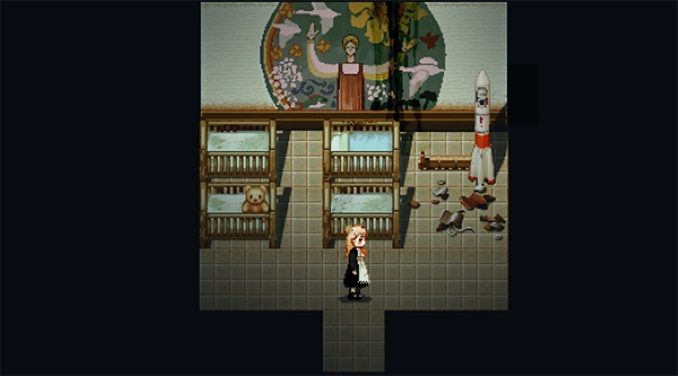
Flesh, Blood, and Concrete is a hallucinatory journey of memory, depression, and collectivism, beset by a rapidly decaying brutalist apartment complex. With wistful art and detailed, sentimental environments, it’s a game that looks head-on into the darkest corners of our melancholy, at the specific yet shared malaise that separates us and plagues our current times with inexplicable grief.
Its specific character work juxtaposed against gestural imagery makes it an evocative work and not one for the lighthearted. Though it presents its horror with a gentle hand, the cavernous sorrow depicted in Flesh, Blood, and Concrete is a masterful psychological portrait of not just its protagonist but anyone trying to claw their way out of a hole. Its hazy subject matter only further confounds the dreamlike and the nightmarish. It’s a recent must play for fans of RPG Maker horror.
Space Funeral

Though more of a parody of horror than anything, Space Funeral nonetheless is an absolute essential for anyone fascinated by freeware art games. Space Funeral takes place in an irreparably glitched, standard JRPG that has been warped into the unrecognizable. Echoes of Earthbound and Dragon Quest lie hidden in plain sight, but have been twisted into hellish amalgams and bugged into hellish forms.
Despite its bizarre presentation, Space Funeral is a fun romp of a RPG and more closely resembles familiar games than other RPG Maker horror offerings. Its psychedelic vibe is achieved not only through its garish art but through its use of music, such as a track from Japanese psych rock band Les Rallizes DéNudés. The reverby guitars and plaintive lounge music here echoes the game’s quirky sense of demise.
Fausts Alptraum
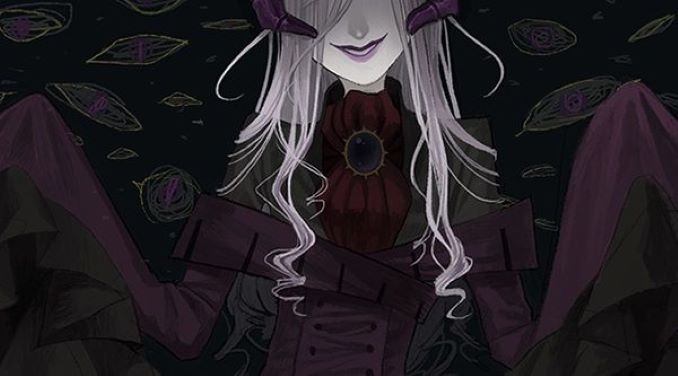
Taiwanese horror game Fausts Alptraum is a Goethean tale of family tragedy and imagination. With gorgeous hand drawn art and a killer, dynamic soundtrack, the game carries a storybook charm reminiscent of several gothic stories and cartoons popular in the late ‘90s. The game follows Elisabeth Faust, an intrepid little girl whose father recently passed. After returning to his mansion, she’s trapped inside by Mephistopheles who wagers that she can leave if she explores the entire mansion and never feels tempted to stay, but will be trapped forever in the house if she gives in.
The game is unique in its length, which comes in at around seven or so hours without the use of a guide. If you’re looking for a longer adventure to fully immerse yourself in, there’s a ton of content here to stick around and check out, including an array of journals detailing Elisabeth’s family history. In many ways, it’s a tried and true haunted house story, which is part of why it works so well—it uses familiar tropes in a creative way and looks lovely while doing so.
Palette

Palette is one of the big popularizers of the RPG Maker genre, preceding the ubiquitous Yume Nikki by 3 years in 2001. The game was so popular in Japan that it later received a PlayStation port courtesy of Enterbrain. The conceit of the game occurs across a phone call between a psychiatrist named Sian and a patient named B.D., a young amnesiac girl who has lost her eyesight. Sian helps B.D. work through her memories and uncover the truth of what happened to her. The game goes to great lengths to simulate this reconstruction of B.D.’s memories, and features a system in which the player can investigate various rooms and attempt to interface with missing or vague objects without B.D.’s gauge. The gauge slowly depletes as you investigate, and if it fully empties, B.D. claims to have a migraine and Sian has to call her back.
It’s a creative spin on puzzle-based gameplay, and ahead of its time in many ways for its nonlinear narrative and challenging use of memory and repetition. It’s a classic for a reason, and helps contextualize the history of RPG Maker horror as a trace to some of the popular tropes endemic to the genre.
Austin Jones is a writer with eclectic media interests. You can chat with him about horror games, electronic music, Joanna Newsom and ‘80s-‘90s anime on Twitter @belfryfire